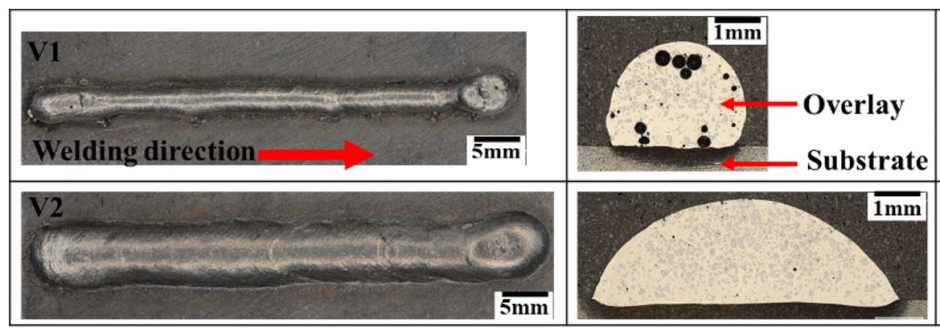Welding is of paramount importance in production of metallic structures. However, welding can cause excessive deformations in the welded plates and unwanted residual stresses. Mitigating these adverse effects is especially important for lightweight panels made of thin plates – sandwich and stiffened panels. Low-heat input welding techniques are beneficial in this regard. For this reason we are investigating and modeling the effect of control parameters (and their physical effects) on the quality of weldments.

Production of metallic sandwich panels can be achieved using laser welding. However, laser weld is thinner than the welded plates (see the figure). Neglecting this fact can lead to severe overestimation of static and dynamic response of the panels. Thin weld decreases transverse shear stiffness of the panels, underlining the need for shear deformation theories within homogenized models.
See:
Karimi, M.R., Wang, S.H., Jelovica, J. “Characterization of cold metal transfer and conventional short-circuit gas metal arc welding processes for depositing tungsten carbide-reinforced metal matrix composite overlays”, The International Journal of Advanced Manufacturing Technology, Vol. 128, p. 2551–2570, 2023, https://doi.org/10.1007/s00170-023-11955-4
Karimi, M.R., Wang, S.H., Jelovica, J. “Taguchi-based experimental investigation into weld cladding of Ni-WC MMC overlays by CMT process”, The International Journal of Advanced Manufacturing Technology, Vol. 122, p. 2433–2461, 2022, https://doi.org/10.1007/s00170-022-09816-7
Yan, S., Jelovica, J. “Buckling and free vibration of laser-welded web-core sandwich panels: Extreme sensitivity to weld geometry variation”. Engineering Structures, 244, 2021, 112737, https://doi.org/10.1016/j.engstruct.2021.112737
Remes, H., Gallo, P., Jelovica, J., Romanoff, J., Lehto, P. “Fatigue strength modelling of high-performing welded joints”, International Journal of Fatigue, Vol. 135, 105555, 2020, https://doi.org/10.1016/j.ijfatigue.2020.105555
